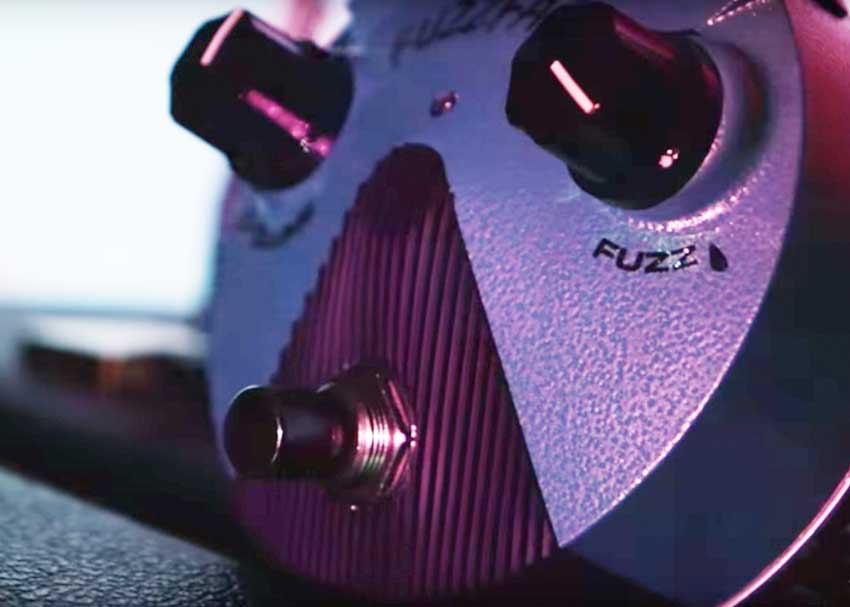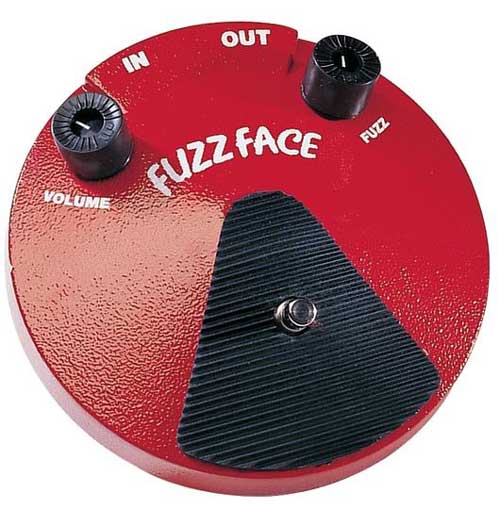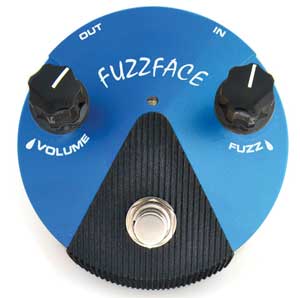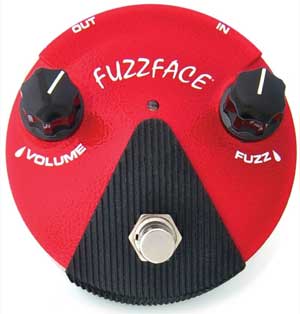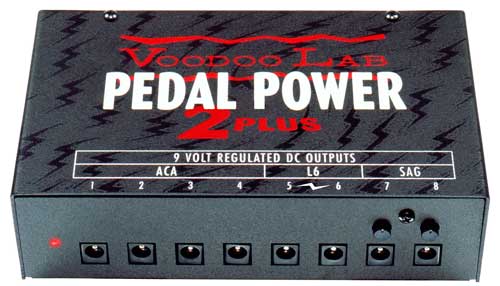When you’re talking about great guitar tone, it’s easy to get lost in a sea of buzzwords and nostalgia. The word “iconic” gets thrown around a lot, but in the case of Jimi Hendrix, there really isn’t a better term. Hendrix inspired generations of guitarists in his tragically short career, and also expanded the palette of rock guitar tones through his use of effects. A lot of what you hear in a Hendrix tune may seem cliché today, but that’s because he created many of the biggest “rock god” tropes.
Hendrix’s upside-down Stratocaster and 4×12 Marshall stack are instantly recognizable and timeless pieces of gear, but there’s a third component to his tone that is equally important: the Dallas Arbiter Fuzz Face. Inside the silly smiley-face housing of this pedal lies one of the greatest fuzz tones of all time, and an invaluable tool to any guitarist seeking classic rock lead tones.
My obsession with Fuzz Faces started years ago when I picked up a cheap homemade clone of the circuit online. I had heard some highbrow guitar snobs talking about the pedal at a local guitar store, and after doing some research I decided to pick one up and give it a try. Despite the shoddy build quality of the clone, I was instantly enamored with the sound of the pedal.
As a Detroit native and a teenager in the early 2000s, I was a big Jack White fan and as a result I had been playing a Big Muffs for a while. I was always unhappy with the processed nature of that fuzz pedal and wanted something more organic. From the moment I plugged in to the Fuzz Face, I knew I had found that sound.
Over the years, I fell deeper and deeper into the rabbit hole of collecting Fuzz Face clones (an actual vintage unit is VERY far out of the price range of most guitarists). I’ve played and owned pedals from the most expensive boutique brands and unknown builders on Craigslist. Silicon, germanium, hybrid variations — you name it, I’ve played them all. I’ve even got a tattoo of the Fuzz Face circuit! Because of the nature of germanium fuzz faces, as well as the proliferation of clones and knock-offs, there can be a lot of variation in sound from pedal to pedal. Tone snobs will claim that certain units are ‘the one’, but in my experience each Fuzz Face has something unique to offer.
One of the most interesting things about a Fuzz Face is that its greatest strengths are also its greatest flaws. There are a number of ways in which a classic Fuzz Face can work against your tone, but once you learn how to manage your gain structure and signal chain, the magic starts to come out. Here are few tips for using a Fuzz Face that I’ve learned over the years:
1. Dial it Back
I know the feeling…It’s very tempting to run your distortion pedals at max gain, but with a Fuzz Face it’s good to experiment with lower gain settings. The pedal only comes with a “fuzz” knob and a “volume” knob, so it seems like you should just crank those to 11 and call it a day, right? Wrong. The fuzz knob sounds slightly different at different points in the dial, so experiment with the controls to find a tone you like. At max gain, it will be a bit more flabby and round than at lower gain settings.
2. You Get What You Give
Using your volume knob in conjunction with the pedal is very important. When the guitar’s volume is set to maximum, you will notice the fuzz has a very woofy, compressed and dark sound. This can be desirable for heavy rhythm parts and syrupy leads in the lower register, but when taking a guitar solo, you can get lost in the mix. The trick here is counter-intuitive; turn DOWN your guitar when you take a solo. The Fuzz Face is very sensitive to playing dynamics, so you can get many shades of gain with slight variations on the guitar’s volume knobs. This is most accentuated with single-coil pickups, like those on a Stratocaster, but you can do it with a humbucker as well. When I use a Fuzz Face in a live band, I run my guitar at about 8-9 on the volume knob while taking a solo. This reduces the overall gain slightly, but it also removes the woofiness and over-compression that comes from running everything at full blast. The result is a tone that is clearer and brighter, while still pretty fuzzy.
You can take this a step further and turn the volume knob down to 3-4 to get a somewhat clean tone that works great for rhythmic playing. If you get really good at manipulating your volume knob, you don’t even have to turn the pedal off. When I use one, I keep the effect on for most of the set and use the guitar’s volume knob to dial in the amount of gain I like. This is what makes the fuzz invaluable to me. It’s so dynamic and responsive that it makes your distortion into something organic rather than static. With the Big Muff I had been using before, I had two sounds – off and on. With a Fuzz Face, there’s an entire spectrum of gain available to you.
3. Play it Cool
If you’re using a germanium transistor fuzz face, it’s important to understand that the transistors are very unstable. Depending on their temperature, the bias can drift and the sound of the pedal can change quite a bit. When it’s too hot, the pedal loses the crackly artifacts that make it sound unique, but it gets louder and smoother. When it is too cold, the transistors become starved for power and the fuzz loses overall volume as well as becoming more compressed and “velcroish.” Both of these tones are valid, but it can be frustrating to arrive at a gig on a hot day to find out that the fuzz has decided to change sounds on the drive over.
There are a couple funny things I’ve done to remedy this. The most absurd thing I’ve done is to refrigerate the pedal before a gig. I used to have a weekly gig at a bar here in Chicago. Since I was close with the bartender and played there so often, I would actually have him put my Fuzz Face in the beer fridge for a half hour before playing. This would reduce the temperature to just below the middle ground (I prefer the sound of a cold Fuzz Face), and it would stay there for the rest of the set. As well as it worked, I do not recommend refrigerating your effects. It is impractical on many levels, and the same effect can easily be achieved by simply starving the power of the effect.
If you’re looking to replicate the sound of a cold Fuzz Face, the most reliable method is to pick up a power supply that has an input with a variable power control. I use a Voodoo Labs Pedal Power 2 Plus, which has two inputs with knobs that let you go from 4.5 volts up to 18 volts. If you give the Fuzz Face less voltage, it becomes crackly and bright, and if you give it more voltage, it becomes huge and round.
4. Break the Chain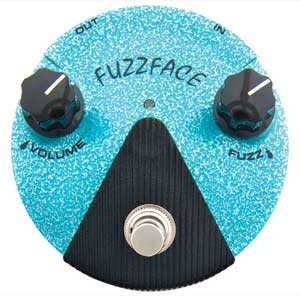
Do NOT plug your Fuzz Face into a daisy chain adapter. The Fuzz Face circuit runs on power that is reverse polarity of a more common, Boss-type effect. If you plug it in to a daisy chain, the best case scenario is that you will destroy the daisy chain. The worst case scenario is that you will fry the pedal itself.
If you don’t want to use batteries, the Voodoo Labs Pedal Power 2 Plus, like many other DC brick power supplies, offers isolated outputs and the option to switch polarity. Pick one of these up to get consistent tone from your Fuzz Face without using a battery or standalone adapter. Besides, you probably just need one anyway.
In the video below, Justin and I plugged into a Dunlop Jimi Hendrix Fuzz Face Mini. Despite its moderate price tag, the pedal delivered on everything a Fuzz Face aficionado would expect from the circuit. The syrupy bottom end, singing overtones and dynamic playing response are there in spades. Plus, the cool smiley-face enclosure has been shrunken to a size that plays nice with your pedal board and the input/output jacks have been flipped to line up with modern right-to-left signal flow. If you’re looking for a good introduction to one of the greatest tones of all time, the Dunlop Fuzz Face Mini is a respectable contender. Check out the video to hear how it sounds when used with a few other pieces of iconic Hendrix gear:

